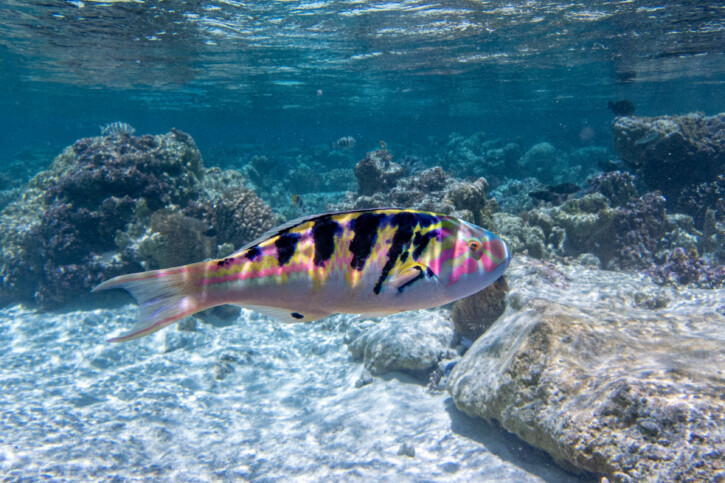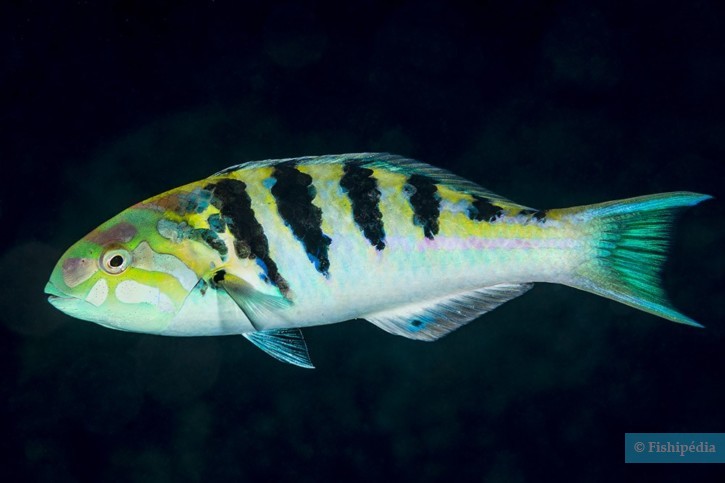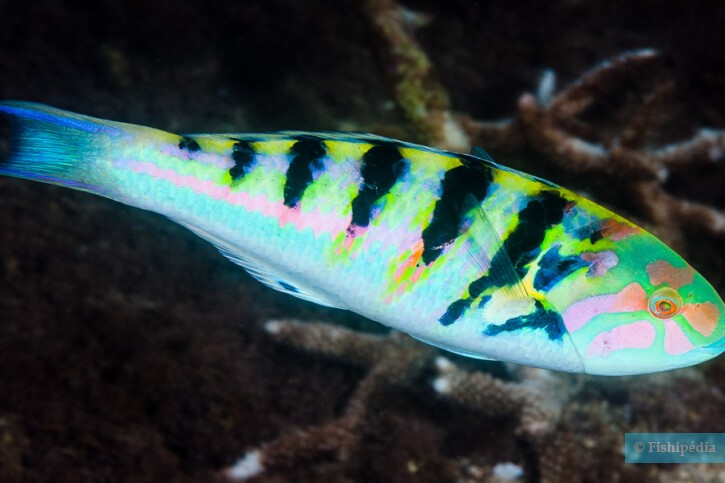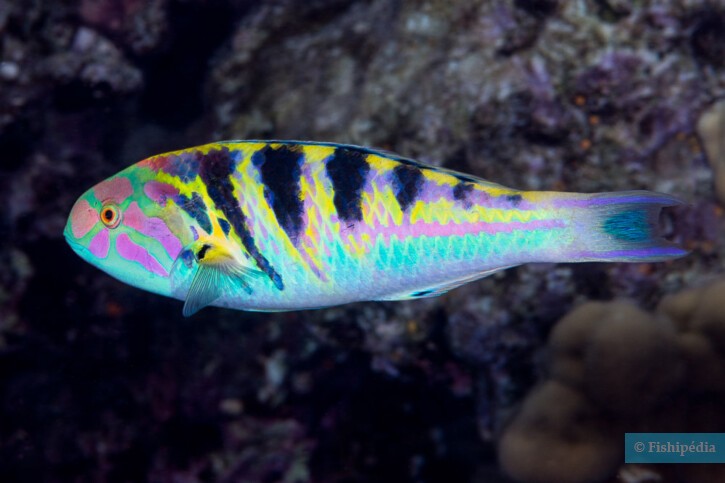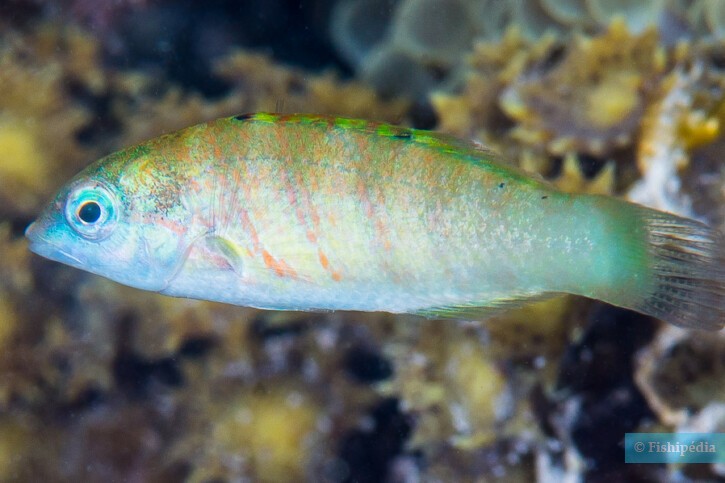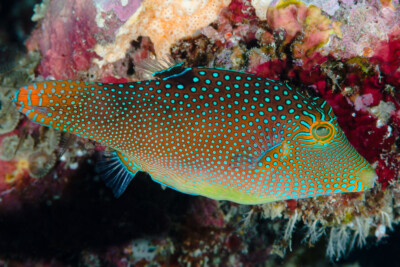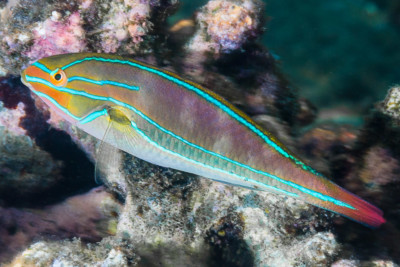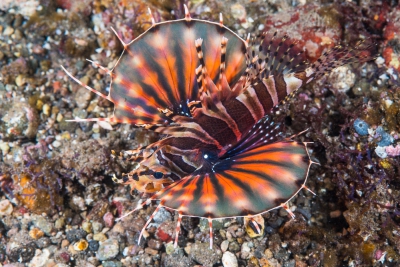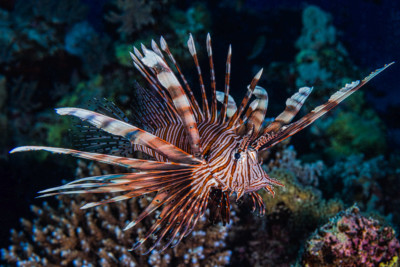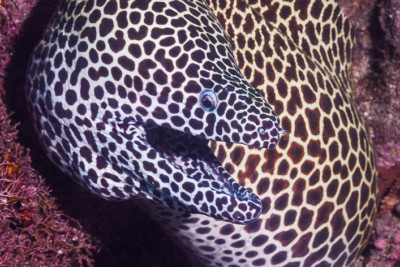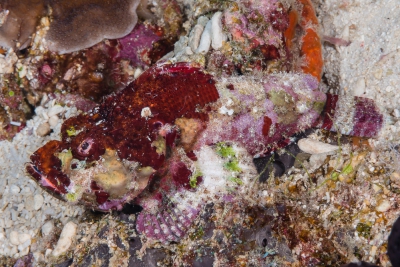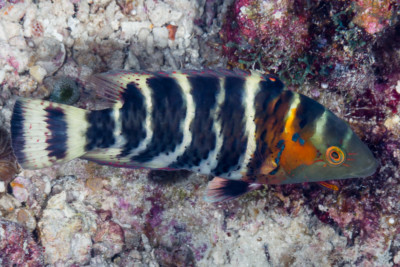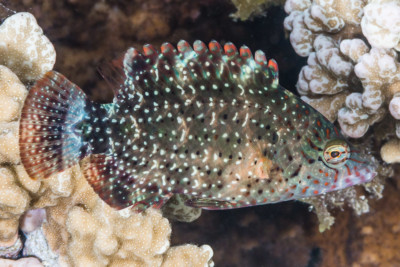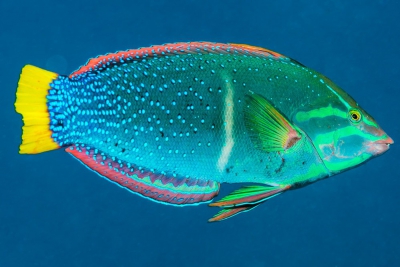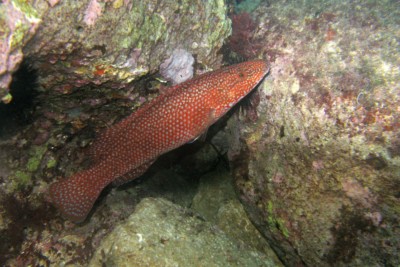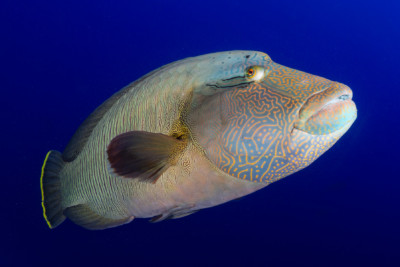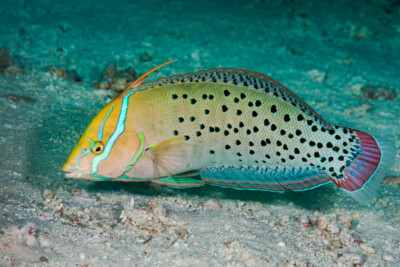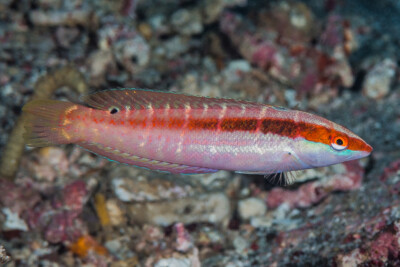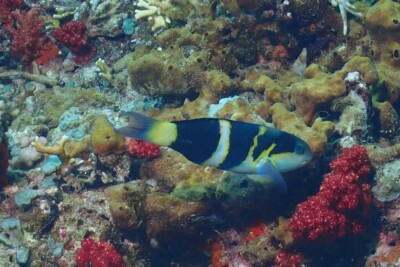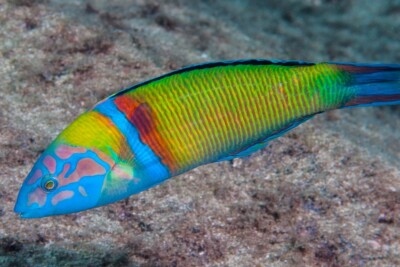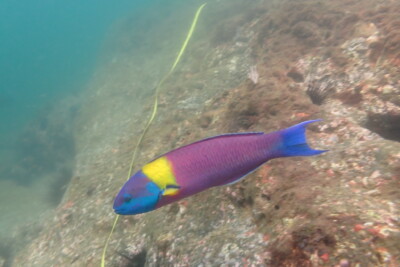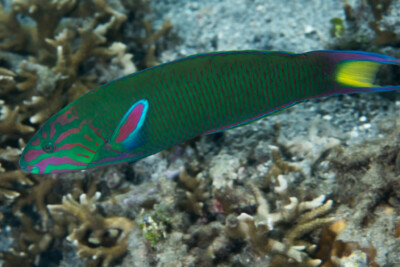sixbar wrasse
| Scientific name | Thalassoma hardwicke |
|---|---|
| Descriptor | Bennett |
| Year of description | 1830 |
| IUCN category (World) | LC |
| Family | Labridae |
| Genus | Thalassoma |
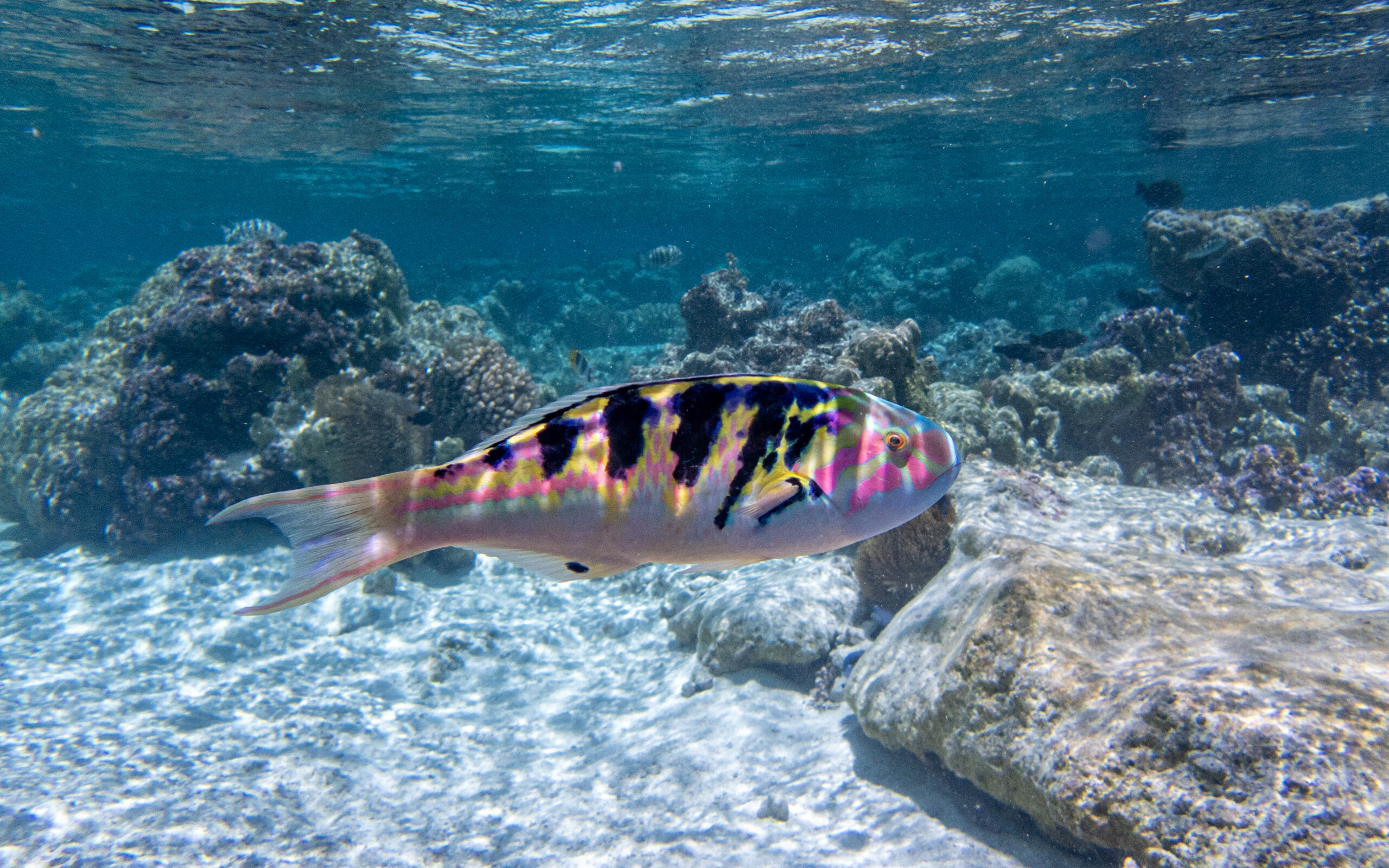

Introduction
Thalassoma hardwicke, commonly known as sixbar wrasse, is a salt water fish.
This sheet is currently being prepared. The texts currently proposed come from our data model or are being drafted. To request priority for this content, you can write to us HERE.
Who is it?
Morphology
-
Type
-
Average size15 cm
-
Maximum size20 cm
-
Longevity12 year
-
Type
-
Average size15 cm
-
Maximum size20 cm
-
Longevity12 year
How to recognize This fish ?
The sixbar wrasse measures around 15 cm. The dominant males can however reach 20 cm. This fish is multicolore with a predominantly vert and orange body.
Sexual dimorphism
The adult male is bigger than the female.
Behaviour & Life cycle
-
dietomnivorous with carnivorous tendency
-
Sociabilityliving in a group or alone
-
territorialYes
-
Way of livingdiurnal
The sixbar wrasse is a fish living in a group or alone naturally found near the bottom. This species is omnivorous with carnivorous tendency .
The sixbar wrasse is a territorial animal that does not tolerate any incursions into its living area. It is particularly virulent against other territorial species and it can provoke heated fights. Relationships between conspecifics are also hectic, with each seeking to secure its place.
Reproduction
-
Reproductionovipare qui pond en eau libre
-
Hermaphroditeprotogynous
The sixbar wrasse is a fish ovipare qui pond en eau libre. always born female. Growing up, individuals will change sex to become male, this is called successive hermaphroditism of the protogynous type.
Harmless species
This species does not represent any particular threats to humans when encountered in its natural environment.
Origin and distribution

What is its habitat?
Natural environment characteristics
-
Temperature18 - 22 °C
-
Depth0 - 15 m
-
FlowStrong and Medium
Biotope presentation
The sixbar wrasse is most often found at a depth between 0m and 15m. However, it is not impossible to find this species at other depths.
Species of the same biotope
Fishkeeping
Not recommended
We do not recommend keeping this species in an aquarium. It has unpredictable needs which, if not met, generate significant stress, potentially leading to a shorter life expectancy, an interruption of its growth or the development of pathogens.
To go further
Sources & Contributions
Participation & Validation
The Fishipedia team and specialist contributors are committed to providing high-quality content. However, although the information comes from scientific sources or testimonials from specialists, the cards may contain inaccuracies.

Benoit Chartrer

Théo Guillaume
Translation
Translation done with the valuable contribution of our translators, who make this information available to a wider audience. We sincerely thank them for their commitment.
Bibliographic references
Evolution of coral reef fishThalassomaspp. (Labridae). 1. Molecularphylogeny and biogeography - G. Bernardi - G. Bucciarelli - D. Costagliola - R. Robertson - J. B. Heiser - Marine Biology - 2003.
Atypical Structure of Olfactory Organ in Moon Wrasse Thalassoma lunare and Sixbar Wrasse T. hardwicke (Labridae) - N. I. Pashchenko - A. O. Kasumyan - L. T. K. Oanh - Springer Nature - 2021.
Social Control of Sex Change in the Bluehead Wrasse, Thalassoma bifasciatum (Pisces: Labridae) - R. R. Warner - S. E. Swearer - Department of Biological Sciences and Marine Science Institute - 1991.
Scientific partners
Tags
#Labridae
#Thalassoma
#barrière de corail
#platier
#Wrasse fish
#Bay of Bengal
#Persian Gulf
#Great Barrier Reef
#mer d'Oman
#East China Sea
#Philippine Sea
#Sea of Japan
#Red Sea
#South East Asian Seas
#Indonesian seas
#western Indian Ocean
#Western Tropical Pacific Ocean
#Réunion
#French Polynesia
#Zanzibar Archipelago
Species of the same family
Same genus
Species of the same biotope
